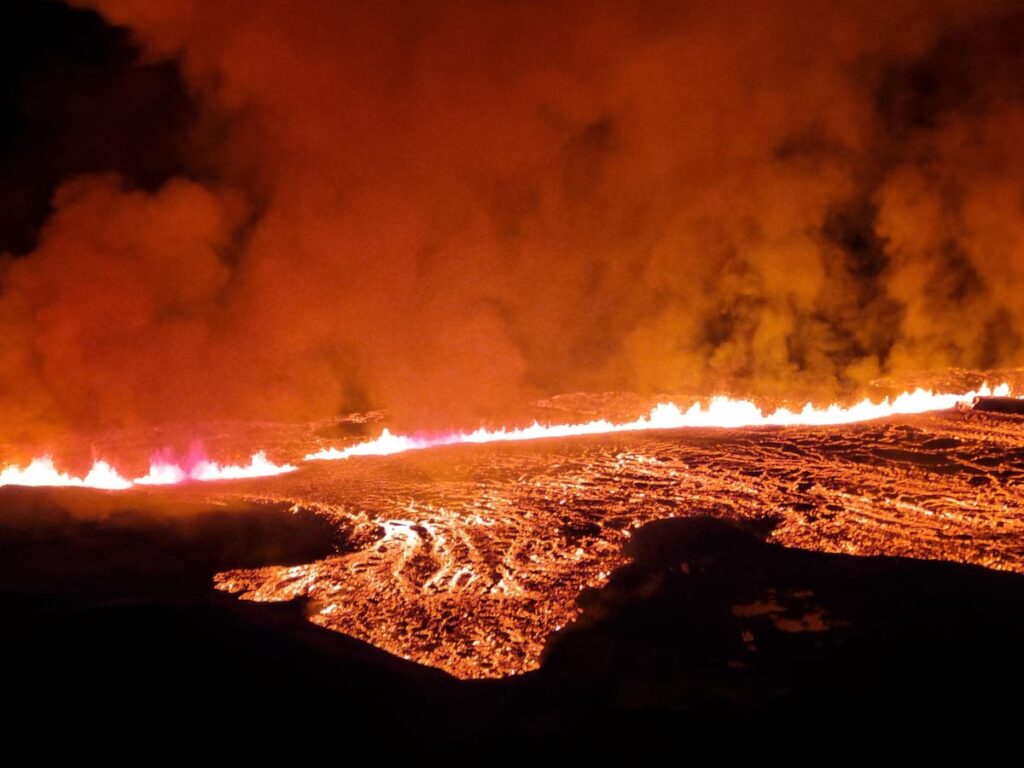A headline in last week’s Guardian caught my eye. It read ‘No-one will save you’ and detailed the bubbling awakening of a volcano near Grindavik in the south of Iceland. Granted that we were in the area, we drove down to have a look. My family didn’t share my ‘lava-lust’ and luckily for them the police were still in place and roads to the volcano were closed.
However, the ‘no one will save you theme’ is also relevant to Iceland in the financial sense, in the way it represents a rare example of a small, powerless country that resolved its banking and debt crisis by itself, in a very painful but ultimately productive way.
Some readers may recall that in the mid 2000’s Icelandic entrepreneurs were making headlines with bids for leading British retailers like Hamleys and Karen Millen. That a small, fish led economy of some 350,000 people could produce such brash, adventurous capitalists has less to do with Iceland’s Viking and Celtic heritage than the over supply of cheap money from its banks.
At the time, Iceland vied with Ireland for the title of ‘biggest banking sector’ (relative to GDP). According to a presentation deck from Mar Gudmundsson, the Norwegian who took over as head of Iceland’s central bank post the crisis, the Icelandic banking sector grew by a factor of three times between 2004 and 2008. Specifically, Iceland’s banks, the likes of Glitnir, Landsbanki and Kaupthing (all AAA rated of course) were growing their balance sheets at a rapid rate (to a near record 10 times Iceland’s GDP) and bankers travelled from London to sell them new, genius investment ideas.
Like Ireland, Iceland became admired for its ‘model’ economy, and took advantage of the fawning of other Nordic countries and bodies like the OECD to sell more ‘Glacier bonds’.
There are plenty of colourful stories about the exploits of Icelandic bankers at that time, but to cut a long story short, when the global financial crisis struck in October 2008, the Icelandic banking system quickly collapsed.
As a small, open economy with meagre financial resources, the fallout was dramatic and painful. In the aftermath of the crisis, the Reykjavik stock market fell by 90%, the corporate bond market cratered and the currency (Icelandic krona, ISK) by 50%. Many households had borrowed in foreign currencies and as a result saw the burden (in ISK) of their mortgages soar. On paper, Iceland’s debt to GDP hit 700%.
A classic banking bubble was soon followed by a deep, textbook ‘bust’ (one economist Hermann Schwartz summed it up as ‘Iceland came late to the global party, drank too quickly, and hit the floor rather harder than larger economies’)
What is most interesting about Iceland is the way it resolved its crisis, largely by itself and through the will of the people. This might sound obvious or even trite, but when I compare it to the fallout from Ireland’s economic blow-up whose causes were very similar to Iceland’s banking crisis, Iceland has demonstrated a far greater degree of reform and accountability in its public life. In a world of heavily indebted nations the example of Iceland is one to bear in mind.
Like other European countries at the epicentre of the financial crisis Iceland was gripped by protests. Reform came quickly. The long-serving prime minister, Geir Haarde lost his job (his last speech to the nation ended with the words ‘God save Iceland’), and the governor of the central bank was forced out of his role.
The new government, and to a large extent the Icelandic people are considered to have largely taken ownership of the resolution of the crisis (think of the public opposition to pension reform in France as a counter example). Some thirty-six bankers were tried, sent to jail and fined, a development that is in stark contrast to other crisis hit countries.
Iceland suffered a brutal financial shock, and a deep hit to the real economy (output dropped 15% in two years), though this was ultimately less severe than the damage done to the Greek and Spanish economies, one reason for this being the manner in which the drop in the ISK made Iceland attractive as an exporter and tourist destination (the curiosity of tourists was also piqued by the explosion of the Eyjafjallajökull volcano and the use of Iceland as a location for Game of Thrones). .
A number of financial reforms also helped, the financial regulator was given extra powers, notably to protect deposit holders and new, domestic economy focused banks were created. The government refused to assume responsibility for debt owed to foreign nations and investors (many of whom were in the UK which placed Iceland on a terror watch list). Fiscal austerity was imposed, under the watch of the IMF, but this was less onerous in its conditionality than that imposed on Ireland, Greece and Spain.
The result of this reform and readjustment process was that the Icelandic economy began to recover some three years after the crisis started, and according to Iceland’s central bank GDP growth had caught up with the recovery of the US economy by 2018, surpassing that of the euro-zone.
Whilst it is a small, idiosyncratic economy, there are some clear lessons from Iceland in terms of how an open economy might deal with a multi-faceted banking, debt and currency crisis.
Very broadly, the key elements involve prioritizing the domestic economy, domestic banking deposits and the free functioning of the financial system, the sense of justice and accountability that comes from ‘regime’ change and the arraignment of guilty bankers, the absence of overly punitive austerity, and the presence of a stabilizing mechanism (in this case the currency).
As I write, Iceland’s economy seems to be thriving, with a new focus on biotech, geothermal power and climate-tech.
France, Germany and the UK should pay attention.
Read the full article here


